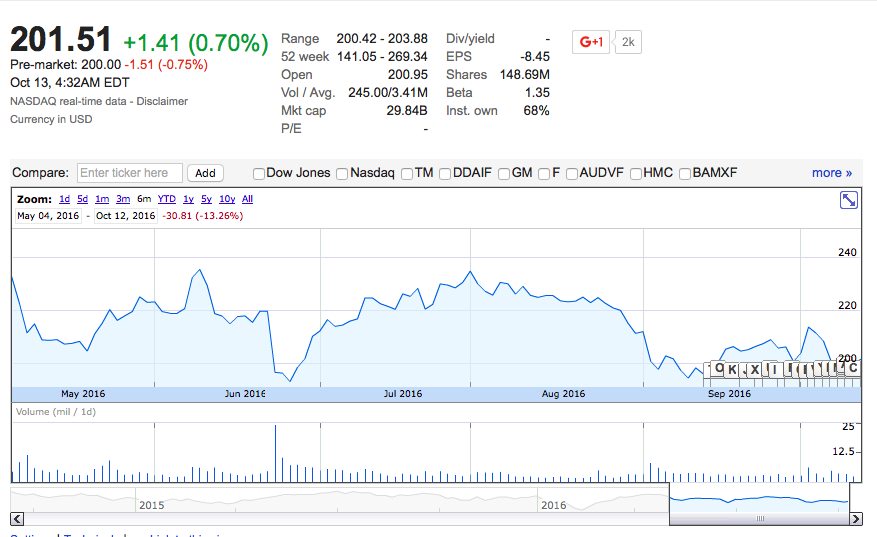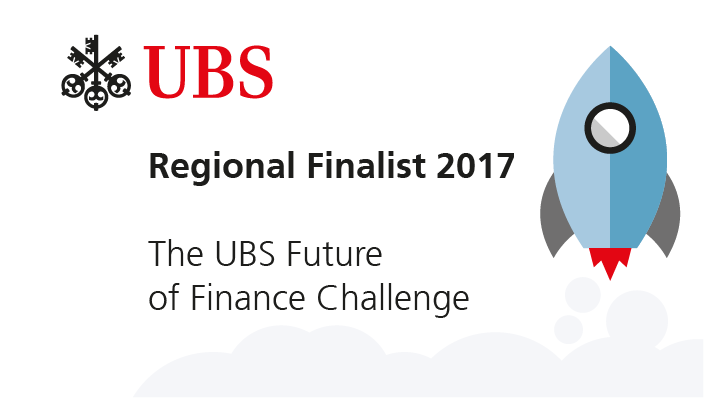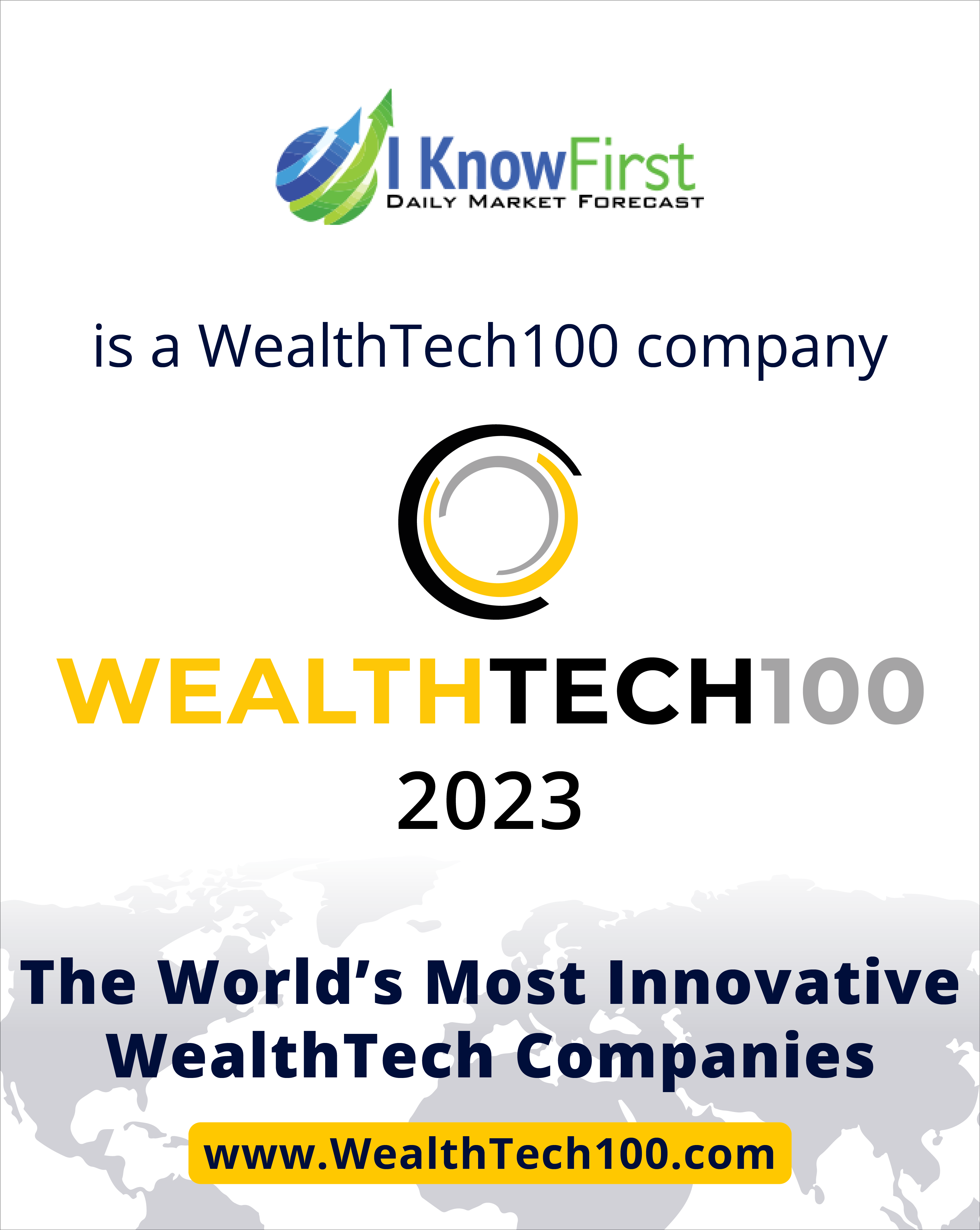Tesla Stock Analysis: SolarCity Acquisition & Accounting Tricks Create A Short Sell Opportunity
![]() This article was written by David Shabotinsky, a Financial Analyst at I Know First, and enrolled at an undergraduate Finance program at the Interdisciplinary Center, Herzliya.
This article was written by David Shabotinsky, a Financial Analyst at I Know First, and enrolled at an undergraduate Finance program at the Interdisciplinary Center, Herzliya.
Tesla Stock Analysis
Summary:
- TSLA is an emerging stock bubble creating massive opportunities for short sellers
- Detailed explanation behind of how short selling is executed in the market today
- Why SolarCity is an excellent example of the bad corporate governance at Tesla Motors
- Non-GAAP accounting tricks Elon Musk uses to cover up losses larger than they appear
- I Know First’s algorithm maintains a short position on Tesla Motors Inc.
Background
Tesla Motors, Inc. founded in 2003 by current CEO Elon Musk, designs, manufactures, and sells high-performance electric vehicles and electric vehicle powertrain components. The Company owns its sales and service network and sells electric powertrain components to other automobile manufacturers.
Since, 2010 when the stock price was at around $17 investors have been fairly bullish on Tesla, no matter having a constant negative income statement since 2010 and having reported its 5th negative quarterly income reports in August for Q2 2016.
They are a bubble waiting to occur like so many hyped up companies throughout the past decades. Many investors fall into a trap of getting caught in a bubble where the only analysis of a firm’s value that is done is how much one can sell its shares to another person who is less smart than them. This refers to a castle in the air theory, where a firm sounds attractive and the potential is enormous Wall Street will exclaim, but soon the market realizes that the company is another failure that was just prolonging the inevitable. We saw this clearly in the dotcom bubble in the late 90s where almost any firm that added a fancy keyword relating to the internet saw its share price and p/e ratio sky rocket. The same was true in the 70s, with firms that sounded very technological or ‘spacey’ even though they had nothing to do with the two. Many might think that this won’t happens to him or her, but this downfall occurs to even the greatest minds amongst men. Sir Isaac Newton lost a fortune in England’s stock market bubble during the early 18th century. Jason Zweig, an editor of the Wall Street Journal comments, “Back in the spring of 1720, Sir Isaac Newton owned shares in the South Sea Company, the hottest stock in England. Sensing that the market was getting out of hand, the great physicist muttered that he ‘could calculate the motions of the heavenly bodies, but not the madness of the people.’ Newton dumped his South Sea shares, pocketing a 100% profit totaling £7,000. But just months later, swept up in the wild enthusiasm of the market, Newton jumped back in at a much higher price — and lost £20,000 (or more than $3 million in [2002-2003’s] money.”
What Is Short Selling?
Although many investors from Wall Street and others around the globe, greatly dislike short selling, for the devaluation it causes of companies; it has an important position in the investing world. The reason is because it provides both parts of the equation to adequately valuing a firm, and helps prevent artificial growing exponentially, turning into a bubble. Short selling is essentially the reverse sequence of the normal sequence of buying low and selling high. The spread between the two prices is the profit, and thus the investors would want to sell their shares at a higher market price than bought at. With short selling, the investor sells high and buys back the shares at a lower price, with the spread between both prices being the profit. However, for an investor to be able to sell high shares he/she does not own, he/she must borrow those shares from a broker, for a fee. Buying the shares back refers to covering a position. For example, say one sells short 100 shares of MSFT at $45, that person receives a borrowed amount of $4,500. MSFT shares then fall to $35 per shares, and the short seller then covers his/her position by paying $3,500. The profit here would be $1,000, or the spread between the prices.
Tesla Motors Accounting Troubles Today
Today, Tesla Motors, Inc. represents a huge bubble and short sell opportunity for investors. Not only has it already reached immense heights at share price from a technical analysis, but it has also engaged in accounting ‘tricks’ and recent corporate activities that further expound upon this notion. It’s announcement to acquire Solar City represents this bubble greatly as explained by Jim Chano, who had predicted the fall of infamous Enron, shorting the firm. Howard Schilit as well explained great flaws in Tesla’s current standing.
On May 4th, 2016, Jim Chanos had announced he was shorting Tesla Motors Inc. Since then, Tesla has been down over 13% as investors have begun to understand the major flaws in Tesla.
About SolarCity Acquisition
Financially, Elon Musk would directly profit from the deal Tesla, buying (acquiring) SolarCity. The reason is that the 2.8Billion dollar potential offer is a huge premium according to financial analyst across the spectrum. Thus, Musk who is a chairman of SolarCity and one of the largest shareholders, owning twenty-two percent. (if not the largest) will earn a premium of 18 cents a share. This is from his shares (profit would be the spread between the premium and par value of the shares). The deal will be paid by Tesla’s equity, ie through its own shares. Additionally, many view the buyout as an attempt to save SolarCity due to its enormous cash burn of 2.2 Billion over the past year, as well declining earnings outlook, due to cheap alternative commodity pricing, ie cheap energy with oil. Thus, Musk will be able to save SolarCity in this aspect and profit. In addition, shareholders of SolarCity, like Musk’s cousin who is the current CEO would also be profiting from this deal, as the shareholders would be all awarded a premium for the purchase. As evident, upon the announcement by Tesla; SolarCity shares were up 22% in after trading hours, or up 500 Million dollars.
Tesla is the main victim of being harmed financially through this deal. The reason is because they are willing to spend even more capital through equity while they are already struggling to expand Revenue and production volume. Although Musk assured the market that the deal is a tremendous vertical integration opportunity, since currently, Tesla supplies consumers with solar powered cars (i.e. car batteries), by buying SolarCity; they will be able to provide a more holistic product. Additionally, if SolarCity is ‘absorbed’ by Tesla they would also have to absorb all of their liabilities as well. More risk would be added to Tesla, which is already struggling in its recent operations, as well as now would have to deal with SolarCity which has been declining over the past year as evident by it share decline. Additionally, there is a huge risk by adding more companies to their acquisition that does not have real immediate future potential based off of fundamentals. Additionally, as well as conflict of interest and being brought and can really hurt the image of Musk, and long-term outlook on Tesla with seemingly reckless buyouts. Even though it was pointed out to be a great vertical integration opportunity, there aren’t many actual data to support Musk’s explanation of people who buy Tesla cars would also want solar power (using solar panels), and even if the demand exists; is there a large one. Since now Tesla is not even able to sell enough of its new models to meet its own quota expectations. Thus management has had to again scale down quarterly expectations again as a result.
‘Red Flags’ Signaling Short Sell Opportunity
An important red flag, as explained by Chanos,in a CNBC article; is that many key executives are leaving Tesla, which shows a sign of weakness on the company’s part since the leaders of the organization are leaving showing they themselves no longer believe in the company value.
Additionally, there real financial output/revenue results do not match expectations. Chanos explains in the article, that Tesla has for the past few quarters been revising lower output expectations, but at the same time, many people have large expectations for the company up to 20 years down the line. These same bullish investors can not accurately predict output sales in a short-term outlook. On top of that, Chanos has an even more negative outlook of SolarCity. The reason is, because they have a levered balance sheet, and are using absorption costing (managerial accounting), to show higher profitability through an increase in the volume of production. However, in reality, they have had a decline in actual recording sales of their units. Thus, they are shifting expenses to a later period, another red flag explained by Chanos. He, has compared the business model of SolarCity, which is a leasing model of solar panels, to that of subprime lending practice. The reason is because you pay a periodic fee for leasing the solar panel, and essentially it becomes like a second mortgage on one’s home, which is thought of as an asset but can turn out to be a liability. Therefore, if Tesla were to make this acquisition they would absorb these ‘costs’ directly, and it can turn out to be a costly burden, which would only put them at an even greater risk for investors, due to their recent increase in spending to 2.2Billion dollars.
Additionally, Howard Schilit explains that another red flag exists since Musk and his cousin (CEO of Solar City) are the dominating shareholders for Solar City, and Musk is CEO of Tesla. As a result, there is a clear representation of a single family dominating the scene for this transaction that can negatively impact Tesla, another red flag.
New Accounting Metrics Introduced by Elon Musk
Furthermore, its recent announcements of revising the way it records revenues and cash for cash flow further show its accounting tricks are being used to cover up its massive cash burn rate, which combined with the solar city will amount to about $1 billion per quarter, according to Chanos. Essentially, the firm will be counting cash that they collect up-front but not necessarily will be keeping in the end of a posted transaction. The metrics that they already used are not part of the traditionally used accounting principles, GAAP, and attempt to show a more positive outlook on the firm’s performance level. For example, their Pro-forma accounting techniques had allowed Musk to lower their quarterly loss significantly by eliminating, “stock-based compensation expense(s)” from their total costs. However, Warren Buffet, as well as GAAP, argue that these are in fact real costs since they dilute share of earnings that go existing shareholders from the balance sheet. More about their new cash flow metrics can be found here.
Measuring Tesla’s Likelihood of Bankruptcy
Recently, Chanos again spoke out against Tesla, providing a Z-score explanation for a bearish outlook on Tesla, at Alpha Conference in NYC. Z-score is a commonly used tool for investors to detect whether a firm is nearing bankruptcy. He had explained that Tesla was already a bit over the ‘red line’ of approaching bankruptcy. The combined value of both SolarCity and Tesla Motors would put Tesla below the ‘red line’, mainly due to their extremely high cash burn rate, that does not correspond with a high positive cash flow. They had refused to do a bridge loan to acquire Tesla, opting instead to finance the purchase through equity. Chanos explains that “They’re going to buy the equity at a premium. Again, this is puzzling to any student of corporate governance.” He has compared the firm to Valeant Pharmaceuticals, which was found to have a deeply flawed business model as well as account techniques that were found troubling. The firm lost over 90% of its value after revelations of its deception to investors.
Raising Capital Funds
The firm is planning to raise additional funds to be able to further develop their Model 3 Sedan, a more affordable car designed to expand their technology to a higher mass. Though Musk has assured investors that the money is not intended for the Solar City purchase, it still dampens the near-term outlook for Tesla. Goldman Sachs has downgraded Tesla Motors Inc. to neutral, mainly due to the capital deployment need for the solar city acquisition. Goldman Sachs and other major investment banks have tended to stay bullish on Tesla Motors in the past, and thus this marks a swift negative transition.
Conclusion
Though CEO Elon Musk is currently attempting to calm investors by talking about the long-term potential and the amazing opportunity that SolarCity will offer the firm, in reality, if one were to dig into the firms accounting and corporate governance the reality creates a great short sell opportunity. Though Tesla has been innovative in the past and does still have competitive advantages, its mismanagement and improper cash spending can greatly hurt the firm’s future.

















